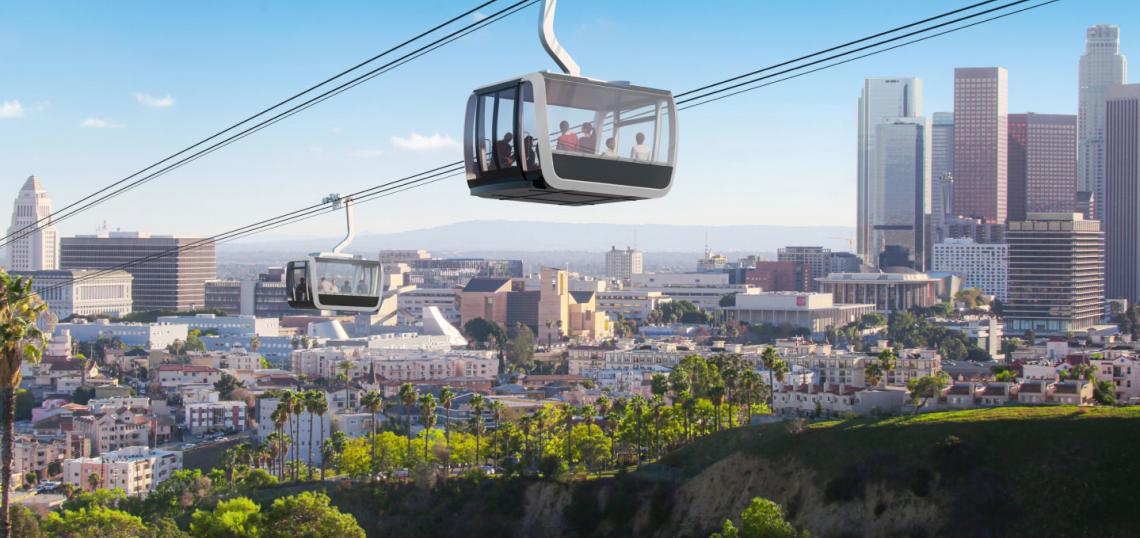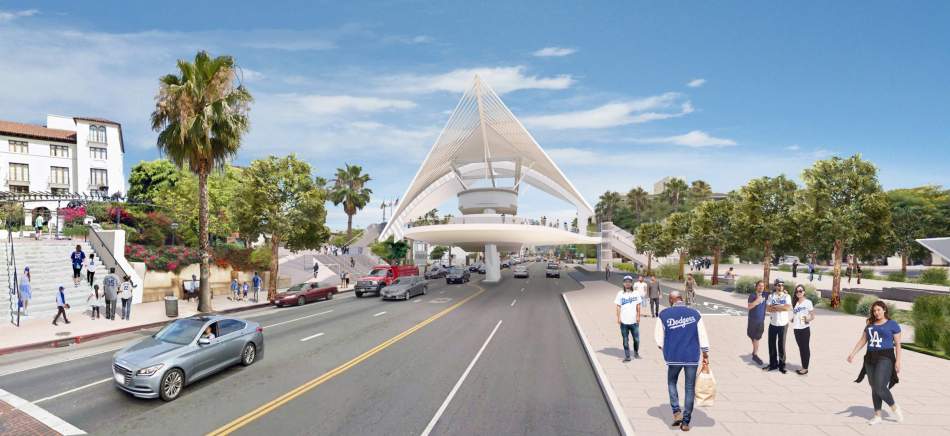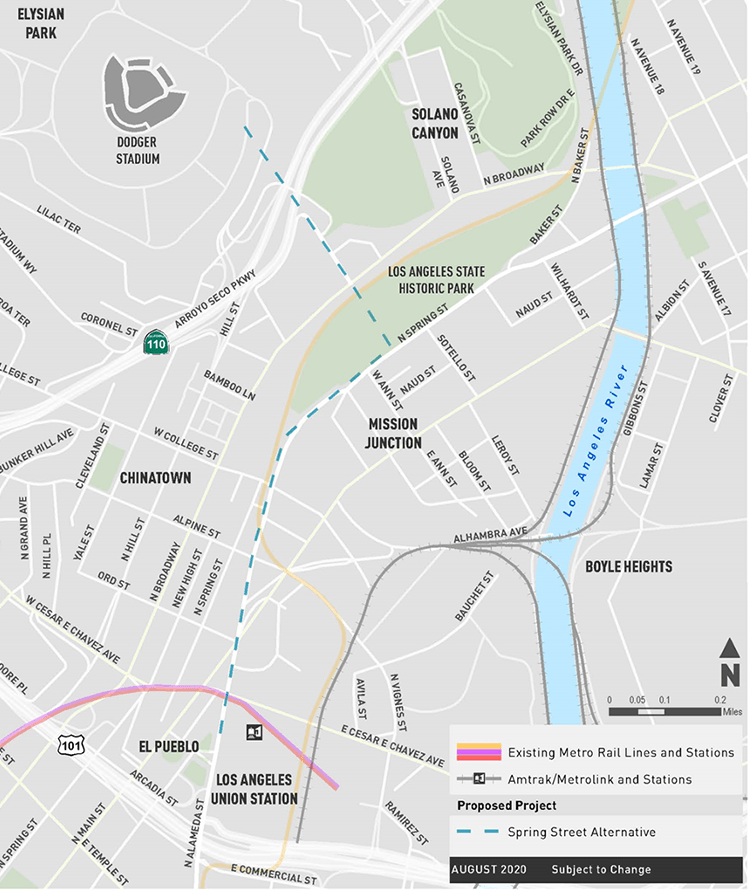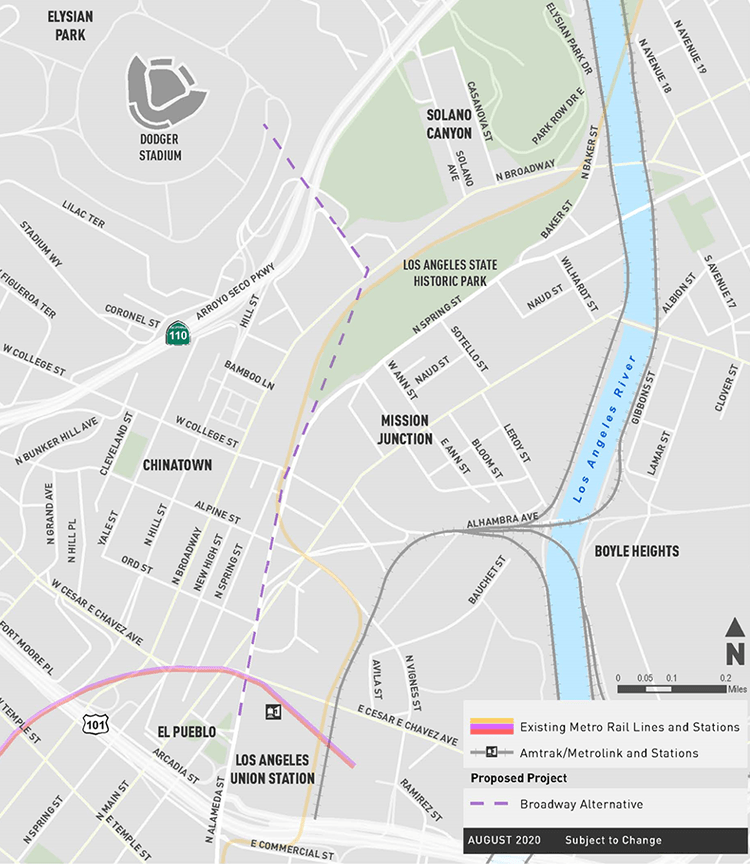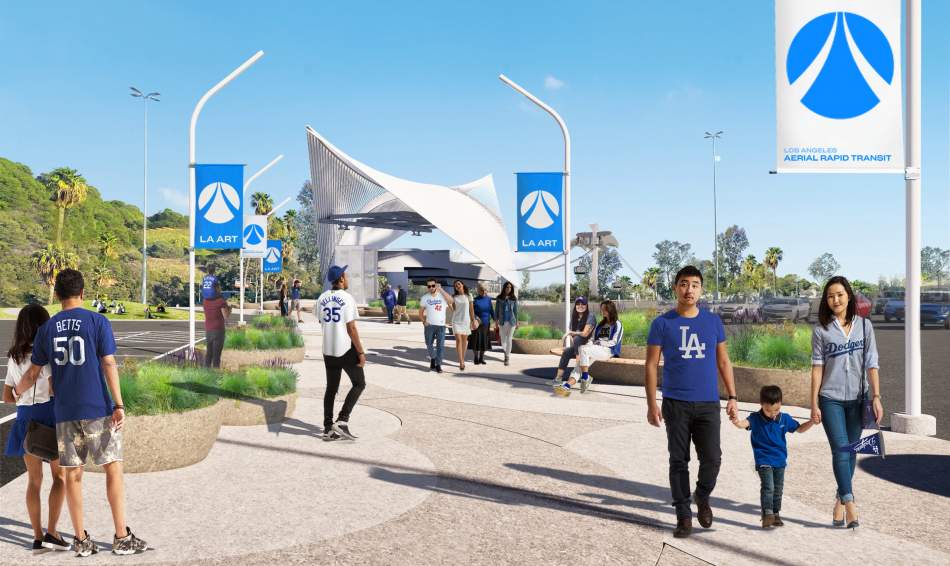The company seeking to build a gondola system connecting Dodger Stadium with Union Station has unveiled new details regarding the project.
On October 1, Los Angeles Aerial Rapid Transit and Metro are scheduled to initiate the environmental review process for the gondola system, which would originate from an elevated stop adjacent to Union Station and terminate in the Dodger Stadium parking lot.
“In recent years, Union Station has hosted more than 100,000 daily transit riders — a number we expect to double by 2040,” said Metro CEO, Phillip A. Washington in a news release. “This project provides an important connection to the stadium and surrounding neighborhoods and reaffirms our commitment to new, environmentally friendly ways of navigating our city.”
The project is envisioned as a tricable detachable gondola system, in which high-capacity cabins - capable of carrying up to 40 passengers - would be supported by three separate cables anchored by tower structures.
Two alignments are being considered for the project, both of which would require the construction of new tower structures within the public right-of-way to support aerial cables.
Under the first alternative, the tram would travel north from Union Station via Alameda as it gradually transitions into Spring Street. After reaching Los Angeles State Historic Park - where an intermediate stop is planned - the alignment would veer east above the L Line right-of-way, then continue within the confines of Bishops Road before crossing the 110 Freeway to reach the stadium.
In the second alternative, the gondola would run along Alameda and Spring Streets, but instead cross diagonally across the park and L Line right-of-way to place an intermediate station at the intersection of North Broadway and Bishops Road - potentially connecting to the park through a new pedestrian bridge. From there, the alignment would travel east on Bishops Road toward Dodger Stadium.
Project proponents estimate that the system could move as many as 5,500 passengers per hour in each direction, allowing up to 10,000 people to access the stadium in the two hours preceding the start of an event or game. The roughly one-mile end-to-end trip would take approximately seven minutes, while fares are expected to be less than the cost of Dodger Stadium parking.
Aerial Rapid Transit has tapped Los Angeles-based architecture firm Rios to design the stations, which are inspired by Mid-Century modern architecture. Renderings depict the stations as white-colored open-air structures, highlighted by wing-like roof canopies.
The project's scoping period, which will begin with the issuance of a notice of preparation for an environmental impact report on October 1, will initiate 45 days for public review and comment. A virtual scoping meeting is scheduled for October 22, 2020, from 6:00 p.m. to 8:00 p.m., and several other open house meetings are also planned.
The estimated scheduled for the project would see final station and route selection occur in 2021, with additional permits and approvals to be processed through 2022. Construction is expected to occur over a roughly two year period, potentially beginning in 2025.
Should the Dodger Stadium gondola become reality, Los Angeles would join a handful of world cities which have used such systems to access hard-to-reach locations - including Portland and New York City. A separate gondola system has also been proposed to provide Hollywood Sign access through Griffith Park.
The gondola project is joined by another outside-the-box proposal to provide easier access to Dodger Stadium - an underground tunnel system proposed by SpaceX and Tesla founder Elon Musk which would connect to Dodger Stadium from a Red Line Station on Vermont Avenue. However, the "Dugout Loop" system has made little progress since it was announced in 2018.
Dodger Stadium is also accessible via Metro's Dodger Stadium Express, which operates from Union Station and the Harbor Gateway Transit Center. However, the two bus lines have not operated this season, as safety precautions taken to curb the spread of COVID-19 have prevented fans from observing games in-person.
For more information on the project, see Metro’s website at www.metro.net/aerialrapidtransit or the official project website at www.LAArt.la.
- Dodger Stadium Gondola (Urbanize LA)




